5 Famous Artists Who Were Migrants and Other Stories
As long as there have been artists, there have been migrant artists. Like anyone else, they’ve left their homeland and traveled abroad for many...
Catriona Miller 18 December 2024
Marc Chagall is one of the most well-known artists of the 20th century. His works exhibit elements from various movements such as Surrealism, Fauvism, Cubism, and Expressionism, yet they have a very distinctive style. With so many paintings to choose from it is a challenge to pick just 10 of them. But let us try! These are 10 paintings to help us understand Marc Chagall and his art.
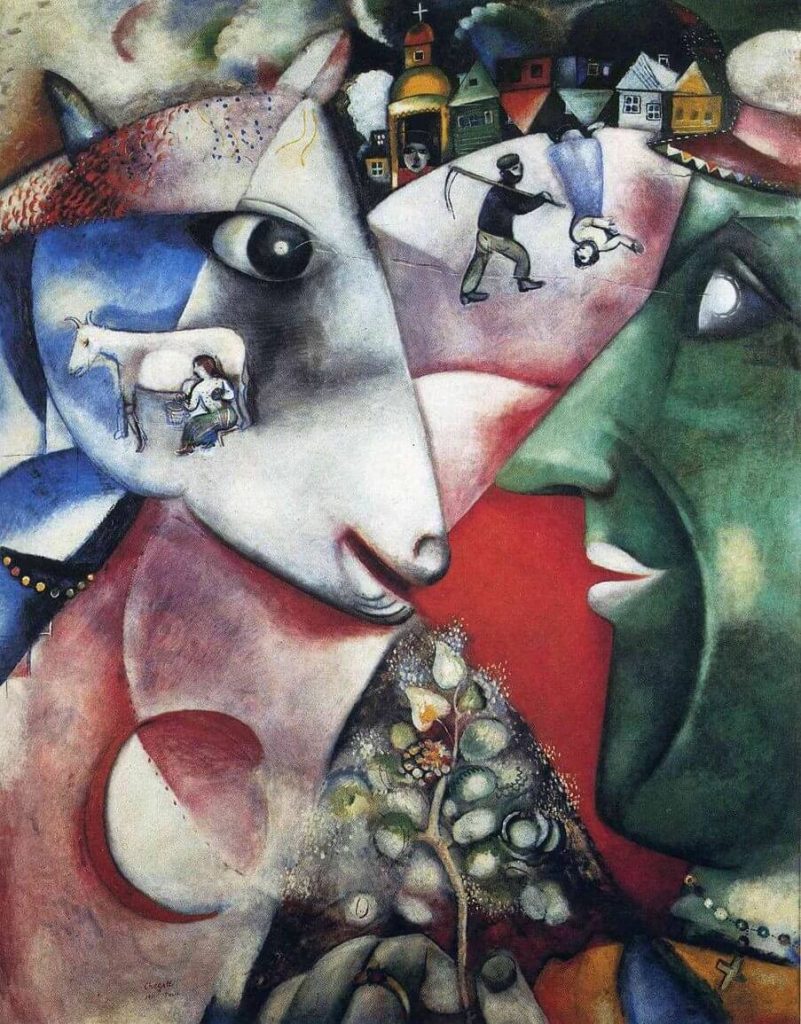
Marc Chagall, I and the Village, 1911, Museum of Modern Art, New York, NY, USA.
Marc Chagall (1887-1985) grew up near Vitebsk, a small Belarusian town made up of a Hassidic community. He is usually called a Russian artist because at that time the territory belonged to the Russian Empire. In order to pursue his artistic career, he left his town for Saint Petersburg and later on, he emigrated to Western Europe. Nevertheless, his paintings frequently evoked his hometown. For example, he painted I and the Village in 1911 while he was in Paris. While the subject recalls his roots, the style is clearly influenced by the artistic movements developing in the French capital. During a conference at the Columbus Museum, Susan Goodman explained that Hasidic Jews consider animals as humanity’s link to the universe. Moreover, the circular patterns are meant to reference the sun, moon, and Earth.
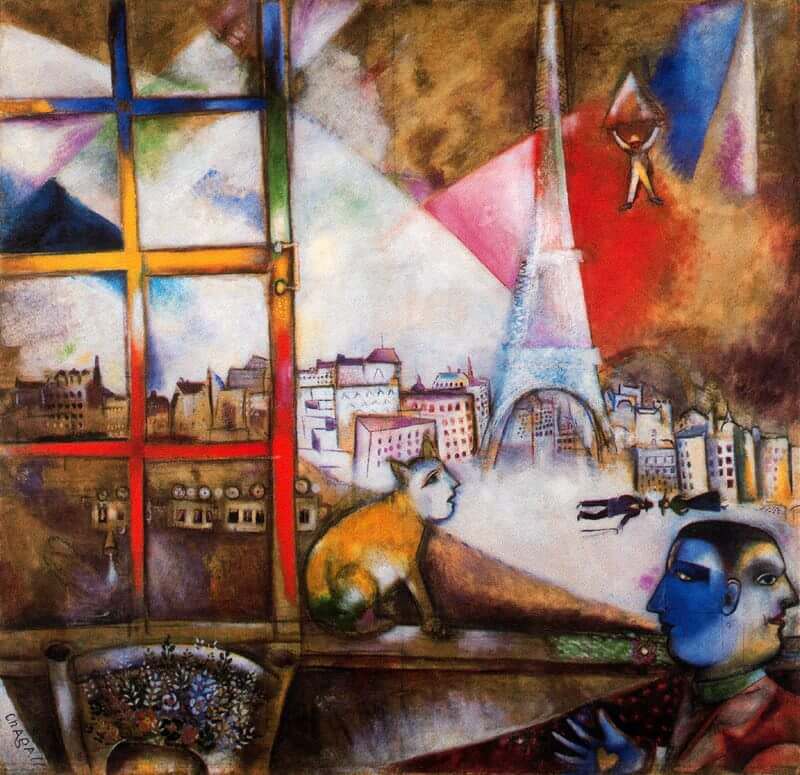
Marc Chagall, Paris through the Window, 1913, Solomon R. Guggenheim Museum, New York, NY, USA.
In order to continue his career, Chagall moved to Paris for the first time in 1910 and remained there for four years. There he met other renowned artists such as Robert Delaunay, from whom this painting draws inspiration. We can see this mainly in the inclusion of the Eiffel Tower and the overlapping planes. It also draws from the Cubist movement, which was dominant in the Parisian artistic circle. This is probably one of his most popular paintings, featuring a distinctive element of his works: floating lovers.
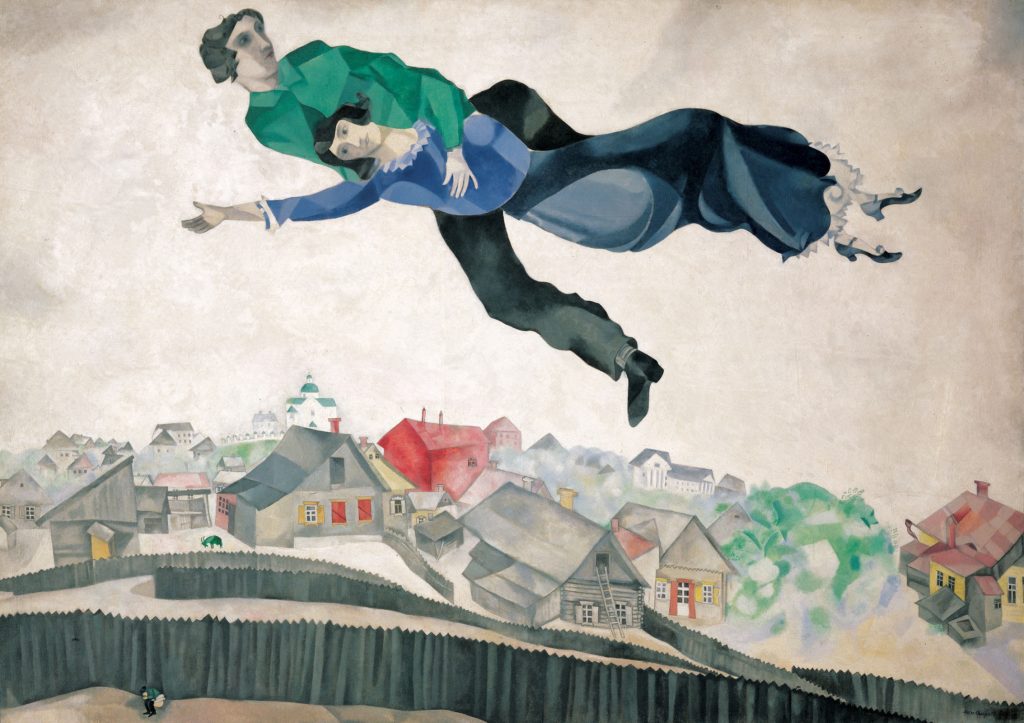
Marc Chagall, Over the Town, 1918, Tretyakov Gallery, Moscow, Russia.
However, Chagall could not stay away from his hometown forever, or at least not alone. The first time he returned, he had only one purpose in mind: to marry Bella Rosenfeld. She was the daughter of a wealthy jeweler and they got married in 1915. During their time together she was his muse and supporter. We can see this in paintings such as Over the Town from 1918. The couple flies happily over Vitebsk as if nothing else matters. That was how strong their love was. This sort of work is among his most beloved. After WWI, they traveled to Paris and then to America to escape the Nazis.
Tragically their story ended with Bella’s death in 1944. She caught an infection that could not be treated for lack of resources in the hospital. In a matter of days, she was gone, devastating Chagall. His grief did not allow him to paint for months thereafter.
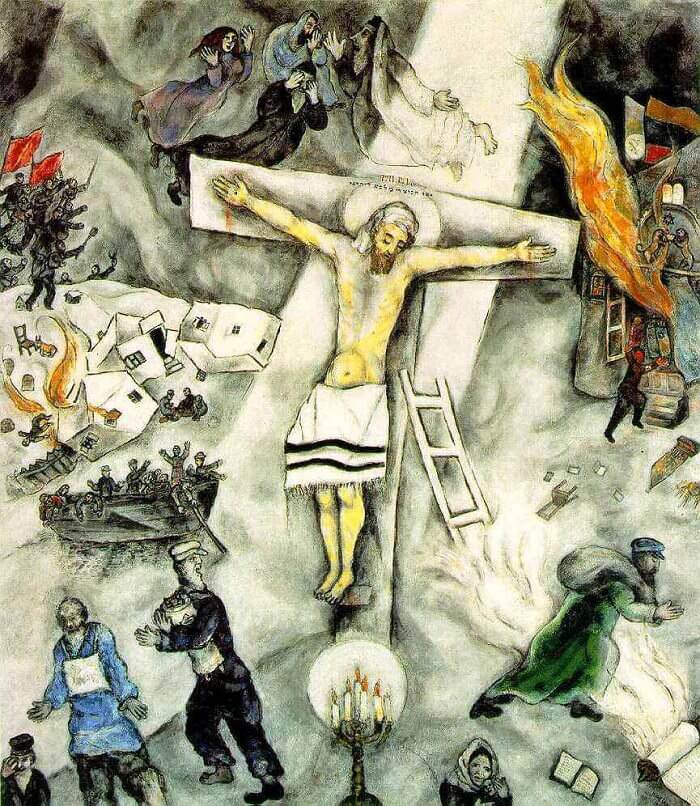
Marc Chagall, White Crucifixion, 1938, Art Institute of Chicago, Chicago, IL, USA.
Chagall’s faith was extremely important to him. As explained above, his community consisted of Hassidic Jews. He faced discrimination from a very early age due to the Russian Empire’s anti-Semitic policies. Things improved when he got to Paris, but as the years passed things got worse for Jews all over Europe. His response was to use Christ’s image at the cross to remind people of Jesus’ Jewish identity and to draw similarities between his sacrifice and that of his people. The White Crucifixion is one of many paintings with this subject. At the time, Germany was already invading neighboring countries and taking action within the nation against the Jewish population. Fortunately, Chagall learned about this from France but it was not long before it reached him.
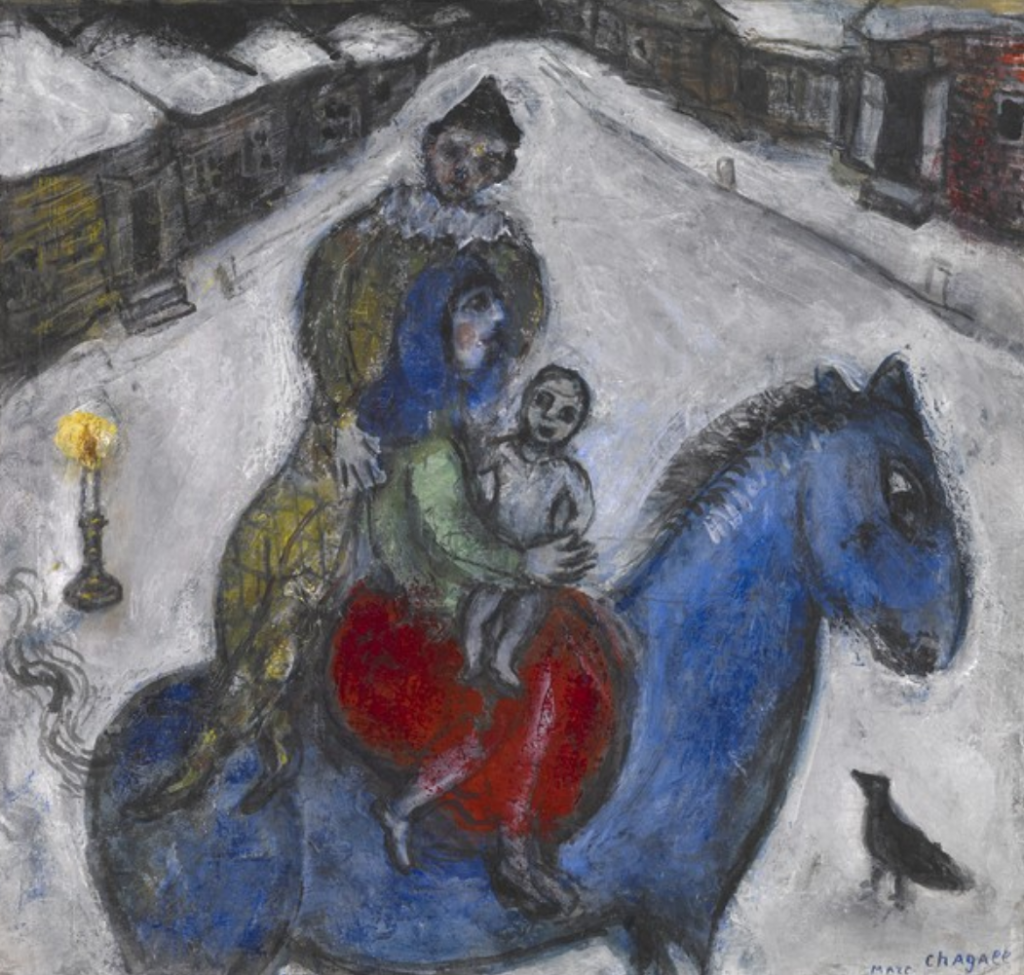
Marc Chagall, The Flight of Egypt, 1938, Indianapolis Museum of Art, Indianapolis, IN, USA.
Being Jewish, the Chagalls had to leave their home and flee to America. It was not an easy decision. France had become a second home and he postponed his exit until it was absolutely necessary. In fact, Varian Fry from the Emergency Rescue Committee and vis-consul Harry Birham had to persuade Chagall several times to leave. With his paintings, they arrived in the US in 1944. This is why many of his works are held in American museums and collections. Through The Flight of Egypt, Chagall evokes his own exile. First, his leave from Russia to France, and then his flight to the United States. Moreover, he dressed Joseph as a harlequin as he considered clowns beings with tragic humanity.
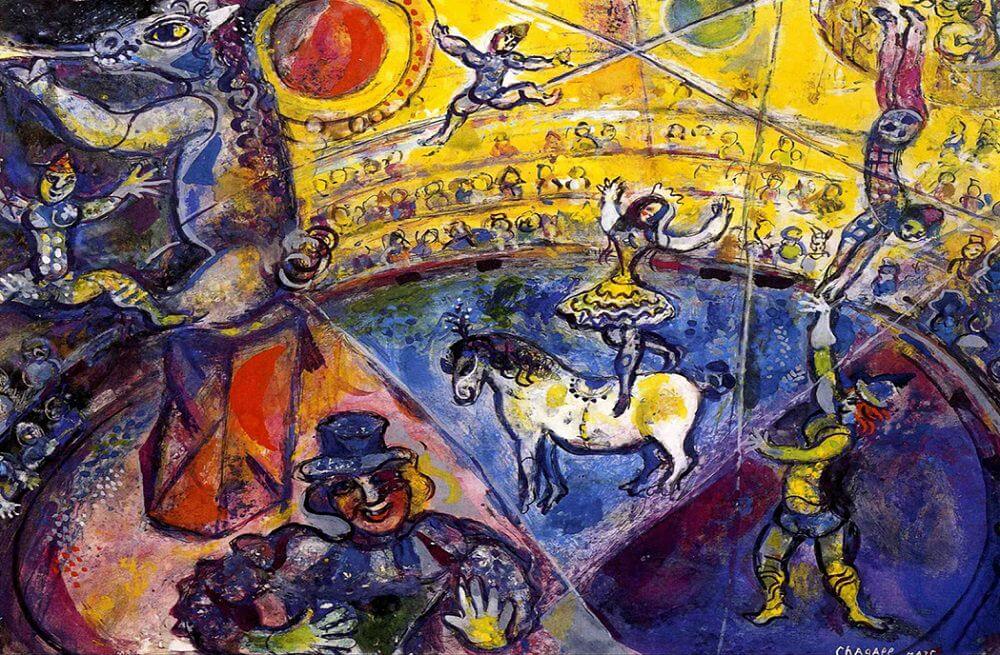
Marc Chagall, The Circus Horse, 1964, private collection. Marc Chagall.
Indeed, the circus fascinated Chagall and he painted various pieces about it. It was a perfect environment for him, with its acrobats flying around and the colorful costumes. His love was born in his childhood as he saw traveling acrobats touring the territory. He once said, “Chaplin seeks to do in film what I am trying to do in my paintings.” The Circus Horse is a painting from 1964 when Chagall was back in France. Although the title focuses on the central section, the whole canvas is full of characters that give the work dynamism. He divides the acts through vivid colors and some lines. Particularly interesting is the horse in the top left corner that plays a sort of trumpet. In the circus, both the real and the fantastical merge.
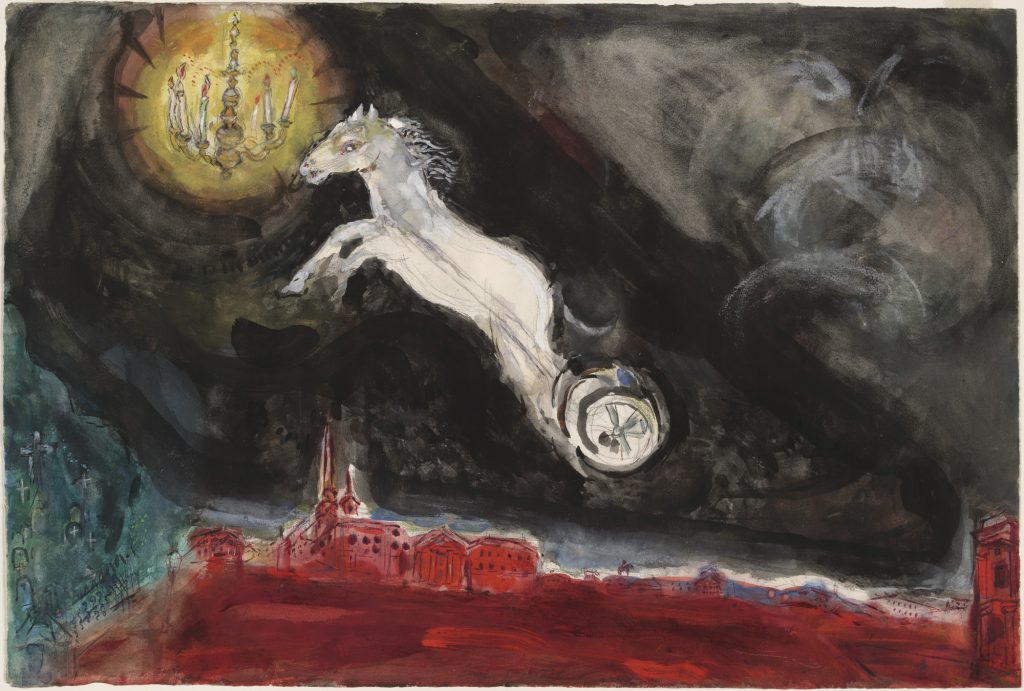
Marc Chagall, A Fantasy of Saint Petersburg, 1942, Museum of Modern Art, New York, NY, USA.
While he was in America, Russian choreographer Léonide Massine invited Chagall to collaborate on the costumes and scenery for the ballet Aleko. This work was based on Alexander Pushkin’s poem Gypsies with music written by Tchaikovsky. He even traveled to Mexico in search of cheaper labor. Yet again, this was a chance to work on his roots but he also took inspiration from Mexican folklore. Moreover, fellow artists who were refugees in Mexico City helped him meet the deadline, such as Remedios Varo and Leonora Carrington. There he made this giant watercolor called A Fantasy of Saint Petersburg in the Palace of Fine Arts. It was part of the final scene of the story and one of the four backdrops he created in total. This is quite a dark image as the white horse passes over the burning city.
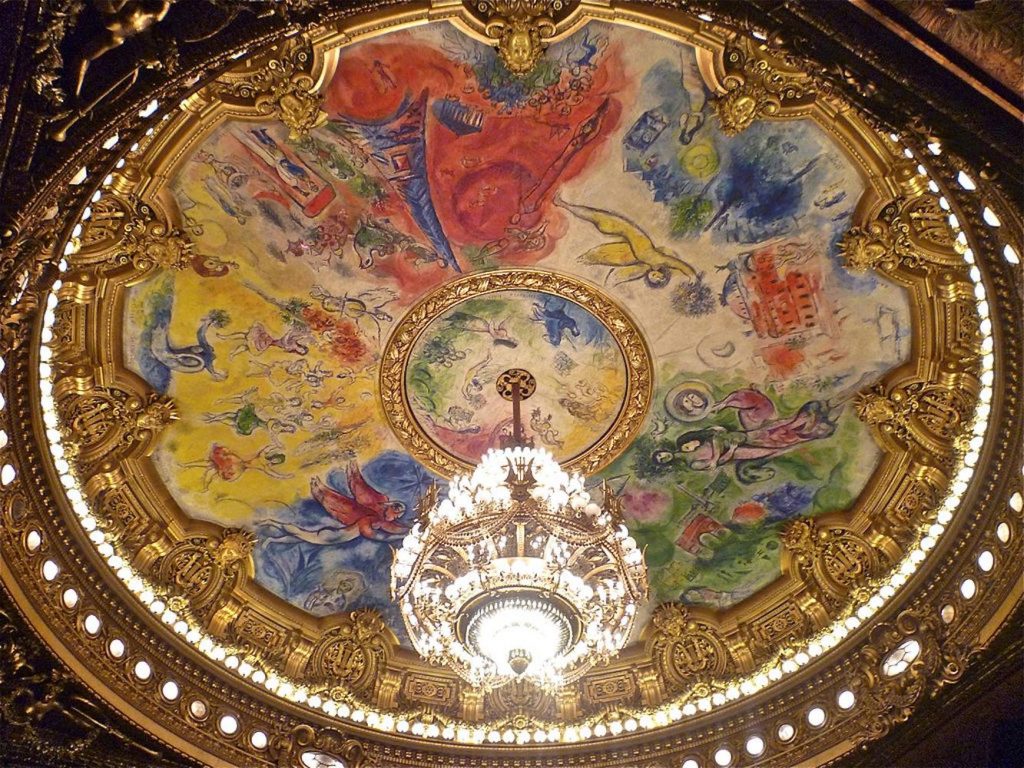
Marc Chagall, Ceiling of the Paris Opéra, 1964, Opéra National de Paris, Paris, France.
Chagall eventually returned to Europe as he never truly adapted to the United States. In 1960, André Malraux, Minister of Cultural Affairs, commissioned him to paint the ceiling of Garnier’s Paris Opéra. The ceiling illustrates great operas often performed at the theater. At the center, there is Bizet’s Carmen, possibly Verdi’s La Traviata, Beethoven’s Fidelio, and Gluck’s Orpheus and Eurydice. Around them, we can see Wagner’s Tristan and Isolde, Mozart’s The Magic Flute, Berlioz’s Roméo et Juliette, Debussy’s Pelléas et Mélisande, Ravel’s Daphnis et Chloé, and Adam’s Giselle. Among them, he included Russian compositors: Tchaikovsky’s Swan Lake, Stravinsky’s The Firebird, and Mussorgsky’s Boris Godounov. Each of them is highlighted with a different color and labeled. Color was a fundamental part of Chagall’s art. He once said: “One must make the drawing sing through the color.”
If you feel like the ceiling does not fit the place, you are not the only one! Chagall’s painting was severely criticized for disrupting the harmony of the theater. In fact, the original ceiling featured another, much more “appropriate” painting by the academic artist Jules Eugène Lenepveu. Despite the negative commentary, it is an outstanding work of art.
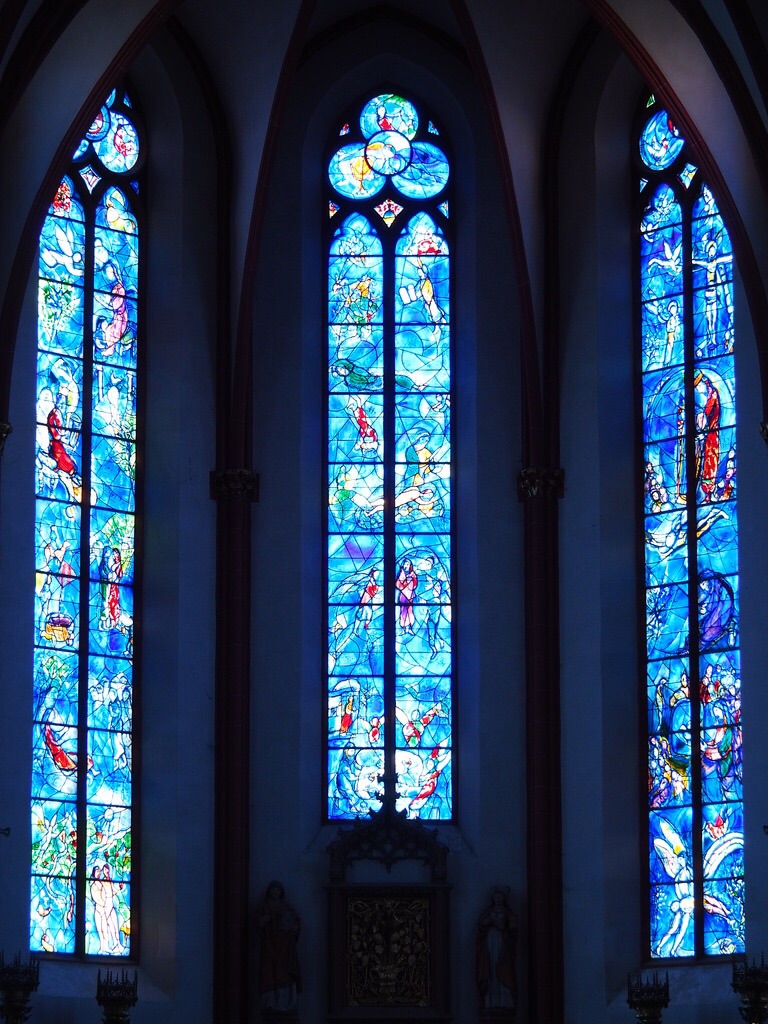
Marc Chagall, stained glass window, 1978-1986, St Stephen’s Church, Mainz, Germany. Flickr.
Not only was Chagall a prolific artist but also a versatile one. Throughout his career he experimented with various media. Upon his return to Paris, he visited the Chartres Cathedral and decided to practice stained glass painting himself. Despite the new medium, Chagall continued with his colorful creations. He received commissions in Israel, Switzerland, the UK, the US, and France. He also worked in Germany of all places. In 1978, he began to work on a series of stained glass windows for the Church of St. Stephan in Mainz, Germany. Understandably, it was not easy to convince him but eventually he accepted. His work in a church meant the reconciliation between Germany and the people who were targeted during the Nazi regime. Blue is the predominant color in these works. Besides, he included scenes from both the Old and New Testaments.
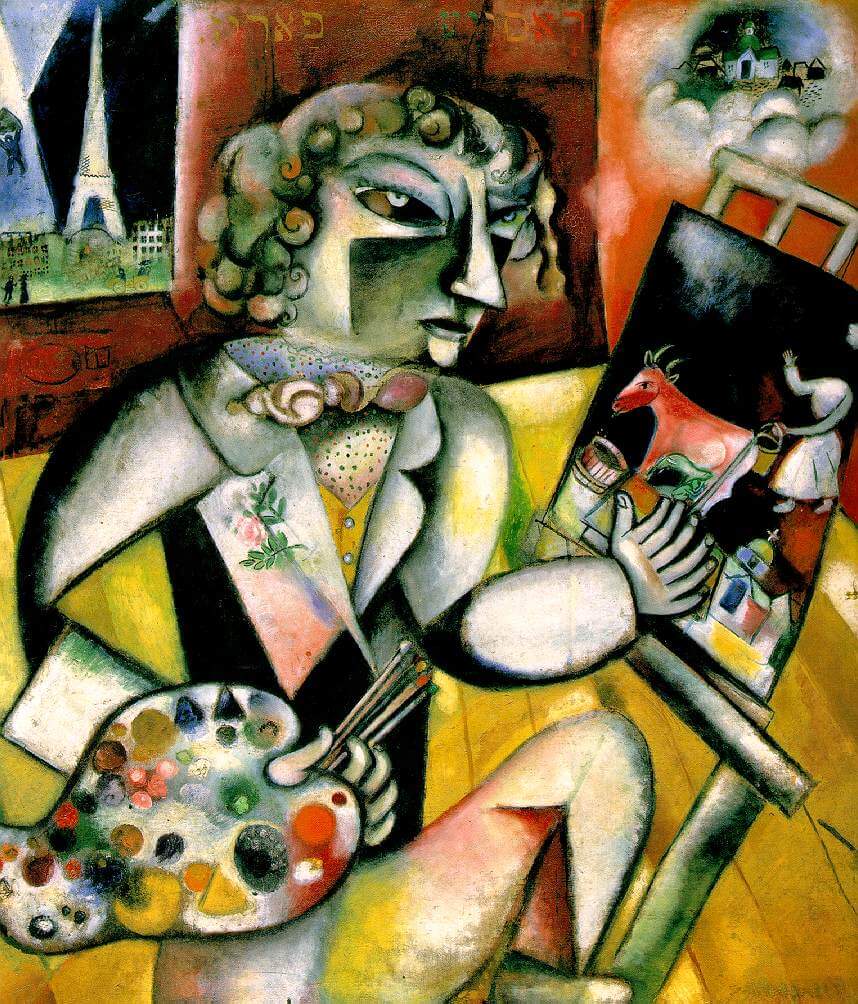
Marc Chagall, Self-Portrait with Seven Fingers, 1912-1913, Stedelijk Museum, Amsterdam, The Netherlands.
To conclude this list is this Self-portrait with Seven Fingers made during Chagall’s first visit to Paris. Although he was still in the early stages of his career, we can see a summary of his art and journey. for example, there is the inclusion of his hometown Vitebsk, as well as Paris. Furthermore, he paints himself as a painter dressed elegantly. Ten years later, being only 30 years old, he wrote his autobiography. What’s most intriguing is the hand with seven fingers that gives the title to the painting. This is a reference to the Yiddish expression Mit alle zibn finger, literally, “with all seven fingers,” a phrase alluding to hard work.
And Chagall certainly worked hard! As mentioned before, he was an extremely prolific artist. We could make ten more articles featuring different paintings every time. His use of color and style has captivated audiences for decades. Today he remains an extremely popular and beloved artist.
‘A circus is disturbing. It is profound’ — The fantasy worlds of Marc Chagall’s Le Cirque, 2018, Christie’s.
Gérard Fontaine: Marc Chagall’s Ceiling for the Paris Opéra – 1st series of panels, 2004, Google Arts and Culture.
Jennifer Blessing: Marc Chagall. Paris through the Window (Paris par la fenêtre), Solomon R. Guggenheim Museum.
Lexington Davis, Chagall in Mexico and the Making of “Aleko,” 2017, Unframed.
Marc Chagall’s Ceiling for the Paris Opera, 2021, The Canvas. Youtube.
Paul Priestely: Persecution, Exile, Confrontation; Marc Chagall the Painter of Love and Light – Art History School, 2019, Art History School. Youtube.
Susan Goodman: Susan Goodman Marc Chagall Lecture 11.30 2017, 2017, Columbusmuseum. Youtube.
DailyArt Magazine needs your support. Every contribution, however big or small, is very valuable for our future. Thanks to it, we will be able to sustain and grow the Magazine. Thank you for your help!